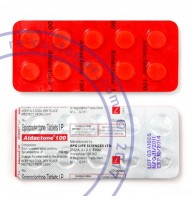Spironolactone, a medication traditionally used as a diuretic to manage conditions like hypertension and heart failure, has found an additional role in treating acne, particularly in women with hormonal acne. This medication works by acting as an anti-androgen, meaning it inhibits the effects of male hormones like testosterone, which can be a significant factor in acne development. This mechanism is especially beneficial for individuals whose acne is exacerbated by hormonal fluctuations, such as those associated with polycystic ovary syndrome (PCOS) or menstrual cycles.
When considering spironolactone for acne, it's crucial to understand both its benefits and potential side effects. One of the primary advantages of spironolactone is its ability to reduce sebum production by blocking androgen receptors in the skin, which in turn can lead to a noticeable decrease in acne lesions and improvement in overall skin appearance. For many women, this medication can be a game-changer, providing relief when other treatments have failed or are not suitable.
However, spironolactone is not without its risks. Common side effects include menstrual irregularities, breast tenderness, and headaches. In some cases, users might experience more severe effects such as hyperkalemia, which is an elevated level of potassium in the blood. This condition can lead to serious complications if not monitored properly. As a potassium-sparing diuretic, spironolactone can increase potassium levels, so regular blood tests are necessary to ensure that levels remain within a safe range.
Given its impact on hormone levels, spironolactone is generally prescribed for women and may not be suitable for men due to the potential for unwanted side effects such as gynecomastia. For women, it's important to use effective contraception while on spironolactone, as the medication can cause birth defects. This precaution is critical because spironolactone is classified as a Category C drug in pregnancy, meaning its safety during pregnancy has not been established.
The onset of benefits from spironolactone may take several months, so patience is key when starting this treatment. It's typically introduced at a lower dose, which can be gradually increased based on the patient's response and tolerability. Monitoring by a healthcare provider is essential to adjust the dosage and manage any side effects that may arise.
In conclusion, while spironolactone can be highly effective for treating hormonal acne, it's important to approach this treatment with an understanding of both its potential benefits and risks. Regular monitoring and communication with a healthcare provider are crucial to achieving the best outcomes while minimizing adverse effects.

